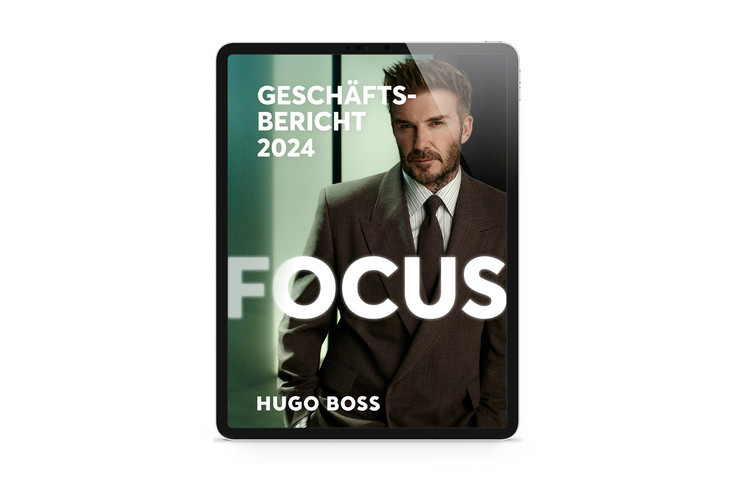“CLAIM 5 TOUCHDOWN” Strategic Update
Building on the success of “CLAIM 5”, HUGO BOSS has introduced its updated strategy, “CLAIM 5 TOUCHDOWN”, setting the course for sustainable, profitable growth through 2028. While the strategic direction remains unchanged, the focus sharpens — elevating the Company’s performance from great to excellent.
This updated strategy centers on three fields of excellence: brand, distribution, and operations. These priorities will drive efficiency, strengthen execution, and position HUGO BOSS for renewed top- and bottom-line growth in the years ahead.
Following more than four years of successfully executing “CLAIM 5,” HUGO BOSS has achieved significant progress across all strategic priorities. Both BOSS and HUGO have delivered strong growth and global market share gains, supported by a robust organizational and operational platform. With “CLAIM 5 TOUCHDOWN,” the Company will further drive sustainable profitable growth. At the same time, HUGO BOSS will significantly accelerate free cash flow generation, forming the foundation for continued shareholder returns.

THREE STRATEGIC FOCUS FIELDS
-
Brand Excellence
HUGO BOSS is committed to further elevating its two brands, BOSS and HUGO, by enhancing their relevance and fostering deeper connections with customers. BOSS Menswear will continue to build on its strong 24/7 lifestyle appeal, while BOSS Womenswear will focus on a refined product assortment built around essential pieces that resonate with female consumers. HUGO will sharpen its identity with a refined positioning and a more accessible product range, placing greater emphasis on contemporary tailoring.
By establishing two dedicated powerhouses for menswear and womenswear, HUGO BOSS aims to unlock synergies and drive growth across both brands. Marketing investments will remain focused on high-return initiatives, including strategic collaborations like Beckham x BOSS and product-led campaigns designed to engage and convert customers. -
Distribution Excellence
HUGO BOSS is enhancing its distribution to deliver a seamless, premium brand experience across all customer touchpoints. The Company will optimize its store portfolio to improve customer experience, boost sales productivity, and enhance retail efficiency. In brick-and-mortar wholesale, HUGO BOSS will focus on building strategic partnerships, refining its product assortments, and expanding its franchise network. HUGO BOSS will strengthen its digital business by further advancing seamless brand and customer experiences across platforms.
Regionally, the Company will focus on further building its position in key markets like the U.S. and China while tailoring its approach to meet local customer preferences. HUGO BOSS will leverage its strong presence in Europe for further market share gains, and it will also capture new business opportunities in emerging markets. -
Operational Excellence
HUGO BOSS will elevate Operational Excellence across the value chain by leveraging its past investments to fuel long-term growth, profitability, and cash generation. The Company will focus on improving sourcing efficiency by ongoing vendor optimization, prioritizing sea freight, and shorter lead times. Advanced planning capabilities, powered by technology and artificial intelligence, will enable smarter and faster decision-making across the business.
Additionally, HUGO BOSS will leverage its expanded automated logistics network and implement further process automation to enhance back-end efficiency and agility — these efforts will ensure the Company is well-positioned to meet customer demand.


